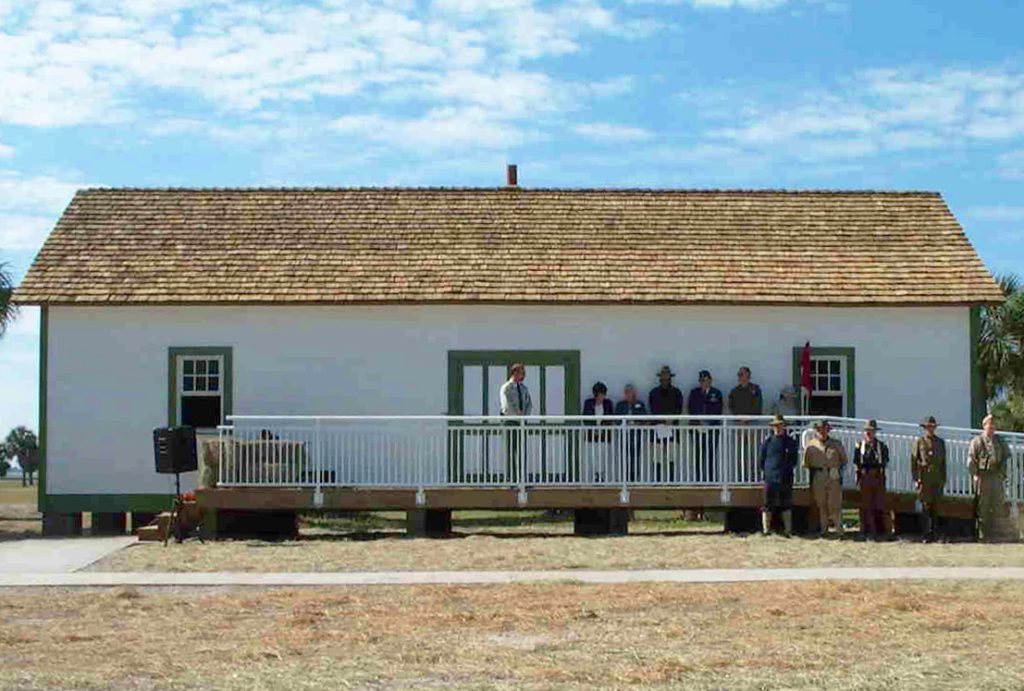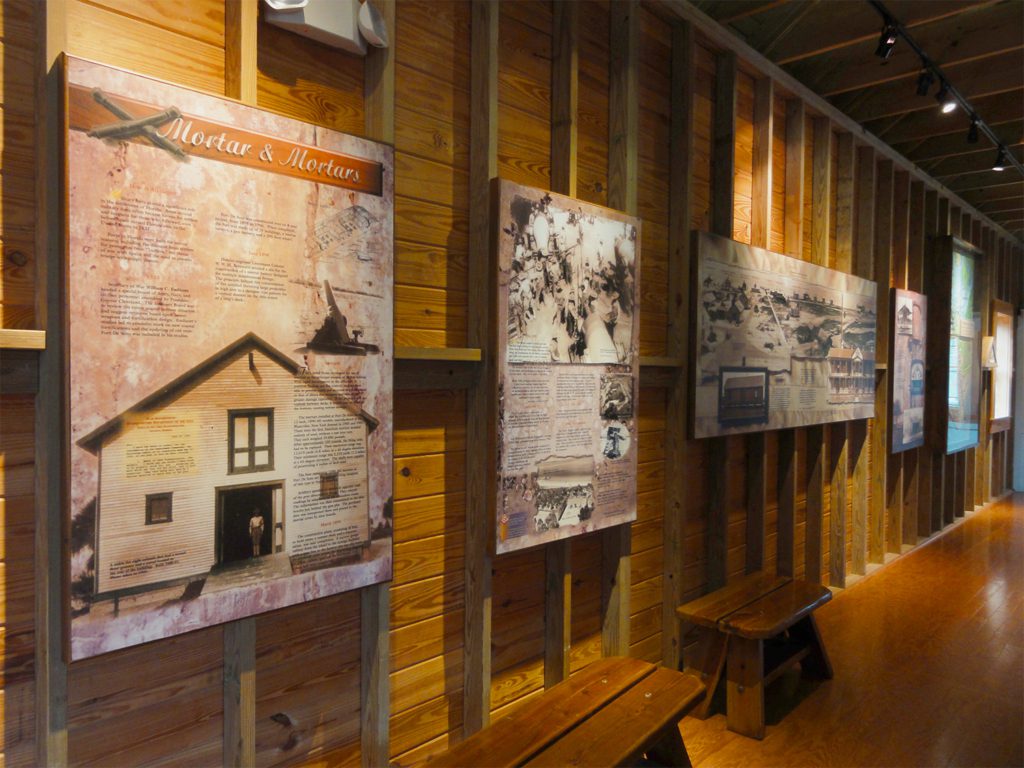Fort De Soto History – Quartermaster Museum
Open 7 days a week 9 a.m. to 4 p.m.
FREE ADMISSION!
(Donations Accepted)
Enjoy a virtual tour presented by the University of South Florida’s Access 3D Lab.
Step back in time with a tour of Fort De Soto Park’s Quartermaster Museum and Battery Laidley.
The museum is on Mullet Key, the largest of the five islands at the mouth of Tampa Bay on the Gulf of Mexico that comprise Fort De Soto’s 1,136 acres.

You’ll also see Battery Laidley, which was the fort’s primary defense, and the site where Battery Bigelow stood. Battery Bigelow, the fort’s secondary defense, was destroyed in the hurricane of 1921. Both batteries were named to the National Register of Historic Places in 1977. You can stroll through Battery Laidley, home to the last four surviving carriage-mounted 12-inch seacoast mortars in the continental United States.
The military first became interested in Mullet Key and the other barrier islands shortly before the Civil War. In 1898, the Army began construction on the first Mullet Key military post. Construction of the Fort De Soto gun batteries and various post buildings continued through 1907. Between early 1900 and about 1906, a total of 29 buildings were erected. Those included a 100-foot-long barrack, hospital, stable, guard house, a shop for blacksmiths and carpenters, an administration office, a mess hall and kitchen, a bake house and a storehouse. The Quartermaster Storehouse building was originally built as a Post Exchange.
The army post remained active until 1910 then soldiers left a caretaking detachment in charge. During the 1920s and 1930s, hurricanes hit the area, damaging the buildings. The post buildings were sold for salvage and torn down in 1939.
Modern visitors saw only Battery Laidley and thought the battery comprised the entire post, not realizing that there were 29 wooden buildings and structures as part of the former military post. In the 1990s, the County provided historical interpretation with the creation of the display room, room descriptions and a history booklet.
Then, in the mid-1990s, park staff, volunteers, and visitors proposed the reconstruction of one or more of these buildings. The concept became a reality in 1999 when the Friends of Fort De Soto Inc., a citizen support group, received a matching grant from the state Historical Museums Grants-in-Aid Program for museum exhibits.
Using historical photographs, Army engineering condition reports and government documents, an architect duplicated the original Quartermaster Storehouse building. Park staff built the 833-square-foot wooden structure. The head carpenter acted as the site contractor and the park’s mason laid the brick footers. Many employees worked to install the cedar shakes on the roof while others painted the exterior of the building. Today’s Quartermaster Storehouse building has features not found in the original building: air conditioning; fiber-optic lighting; concealed insulation in the walls, door, and ceiling; as well as a fire-suppression system.

Inside the museum, visitors see the post’s quartermaster surrounded by supplies he would have issued to the soldiers. Wall panels depict the earliest history from the 16th Century when Spanish conquistadors encountered the Tocobaga Indians in the Tampa Bay area. Several panels show the Spanish-American War and its impact on the Tampa Bay area.
A touch-screen computer program provides information, images, narration and historical film clips. Visitors can learn about the earliest area history to current information about the Friends of Fort De Soto, nature trails and other park features. Three display cases contain Spanish-American War items, recovered artifacts from the park and World War II military history, including an original practice bomb from the Mullet Key Bombing Range that was found in the park. A porch scene provides a glimpse of daily life with a woman’s dress, a deck of playing cards, a rattlesnake skin and other items from the early 1900s. The largest wall panel is a combination of three photographs showing the post buildings. One wall panel focuses on the history of the army’s coast artillery corps with photographs of soldiers in uniform and patches and pins. The museum officially opened on Veteran’s Day – Nov. 11, 2000.
With this historical addition to Fort De Soto County Park, we hope to spotlight the historical significance that Fort De Soto played in the history of the United States. Fort De Soto Park’s Quartermaster Storehouse Museum project received a meritorious award in the category of non-residential restoration/rehabilitation from the Florida Trust for Historic Preservation during the 2001 Annual Statewide Preservation awards program held in Jacksonville on May 19, 2001.
For a more detailed history of Fort De Soto please review our Historic Guide.